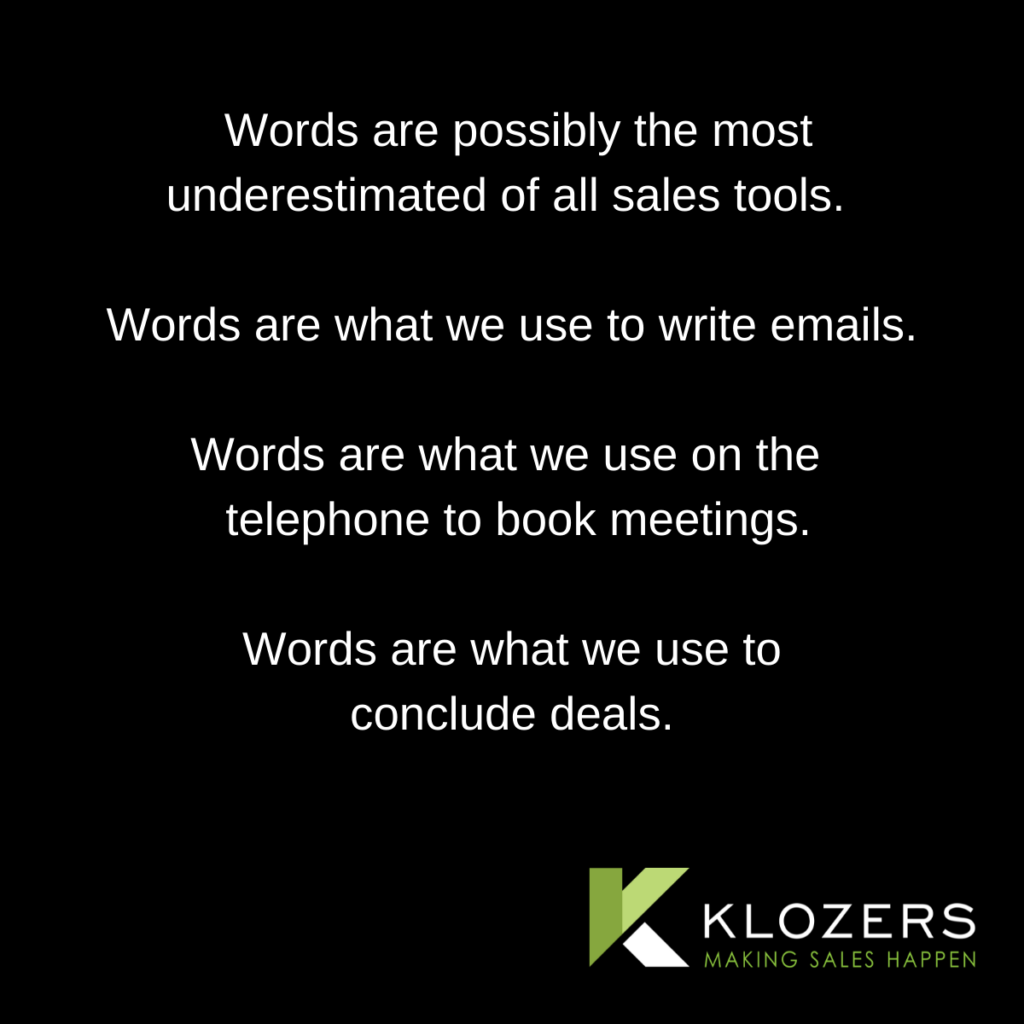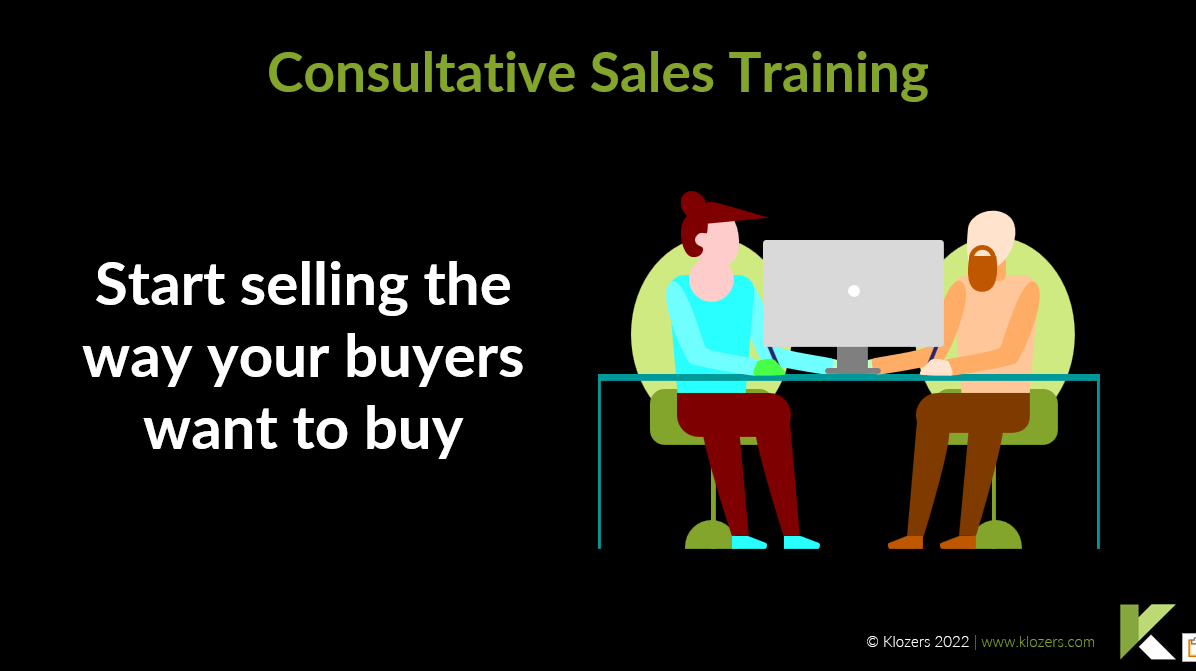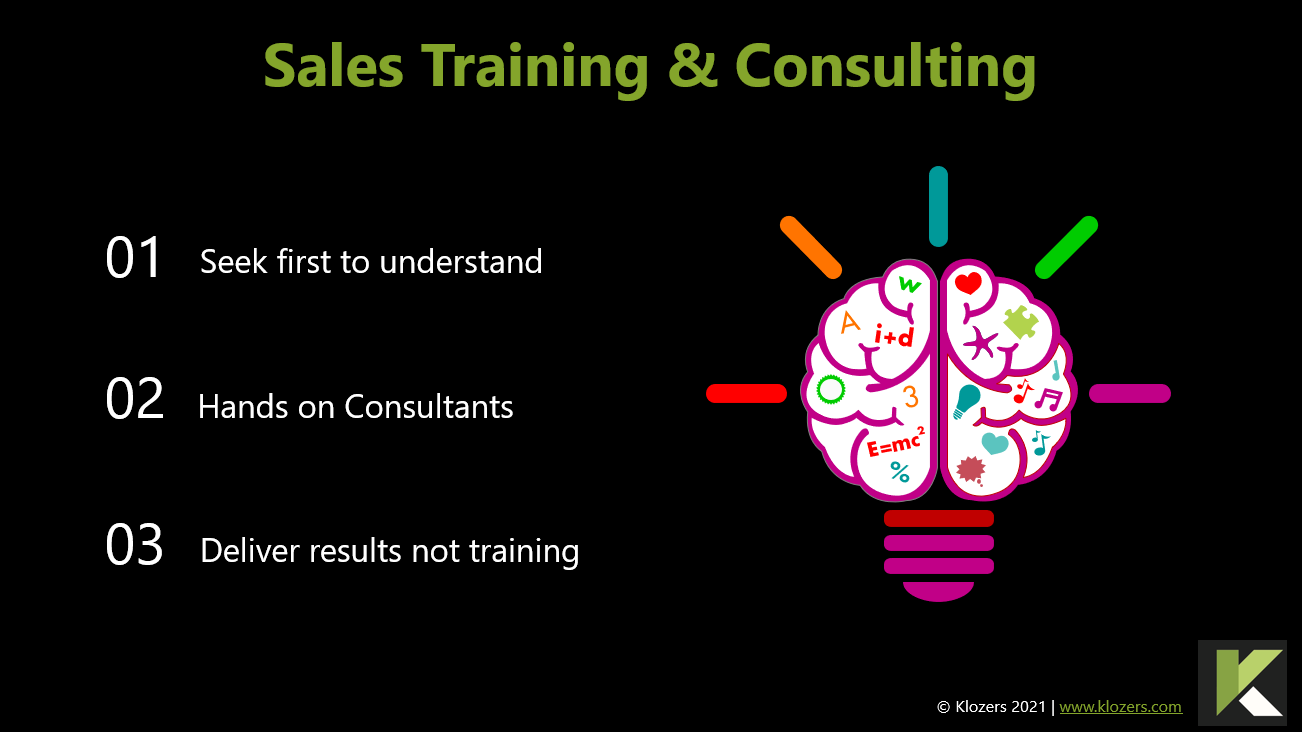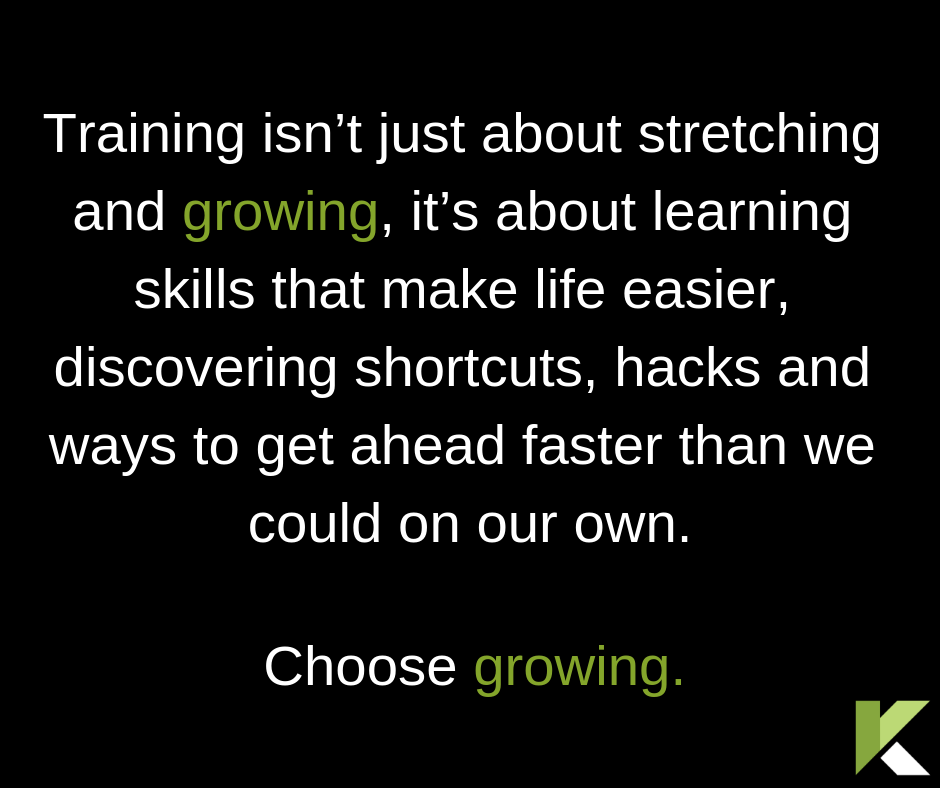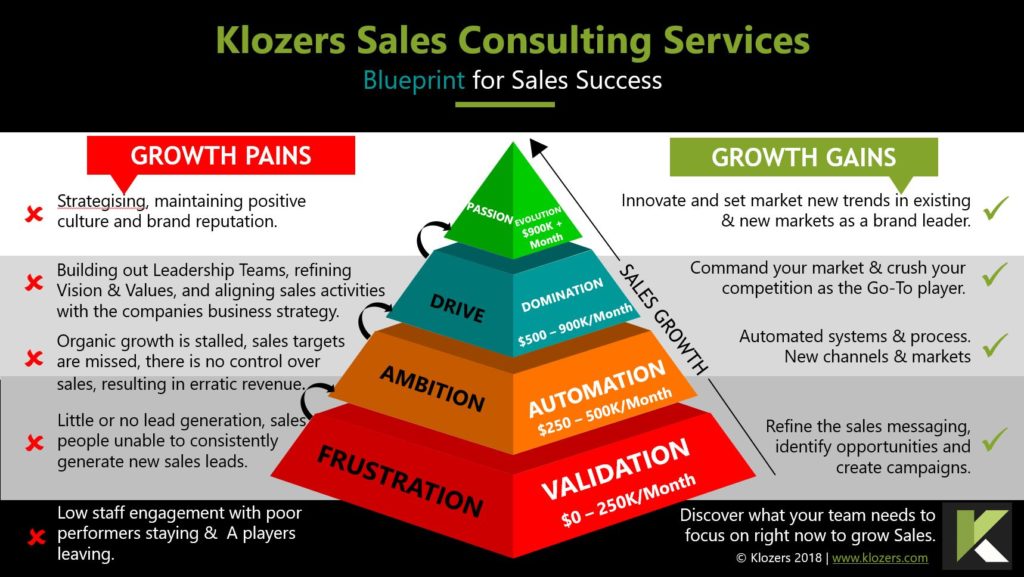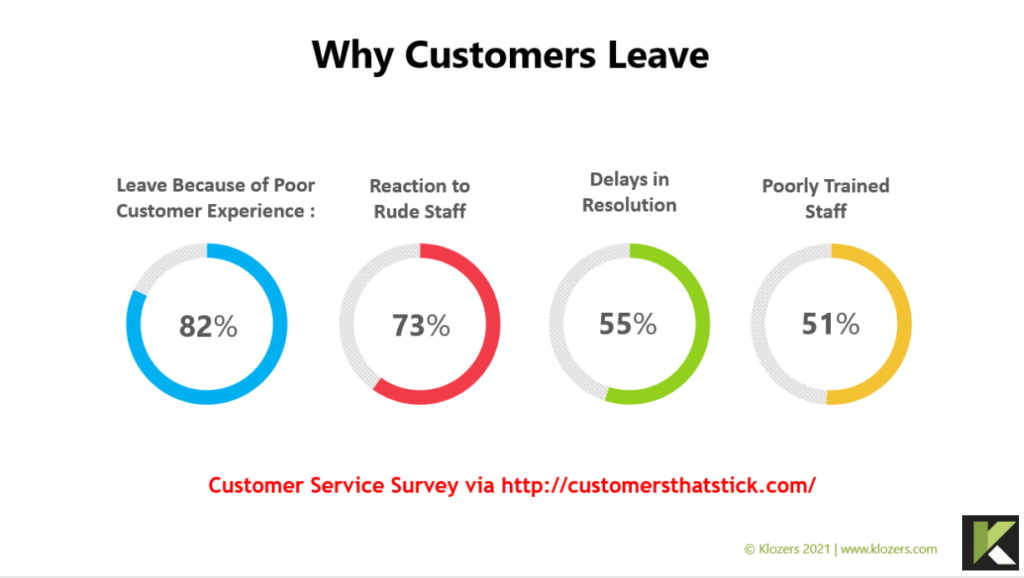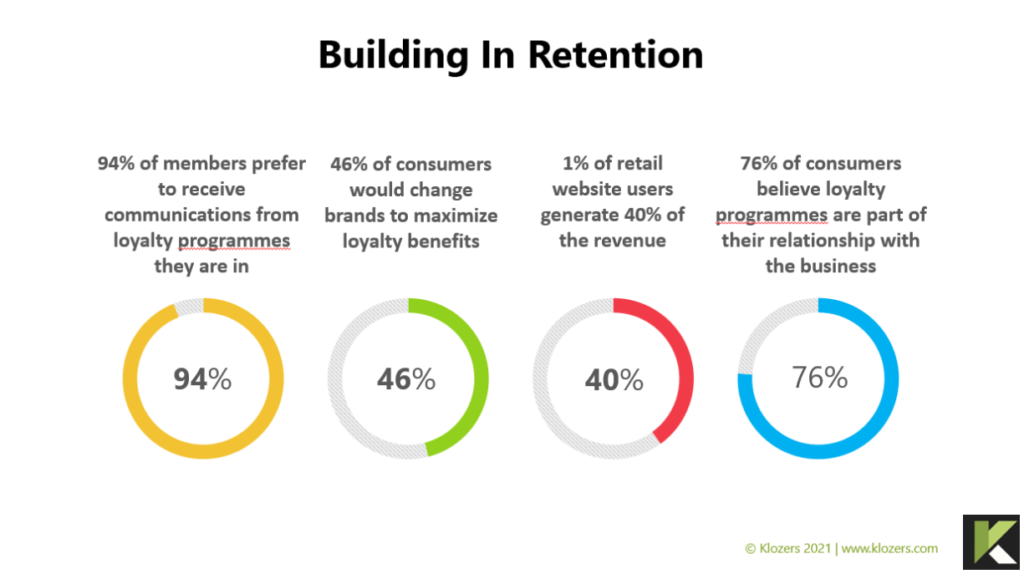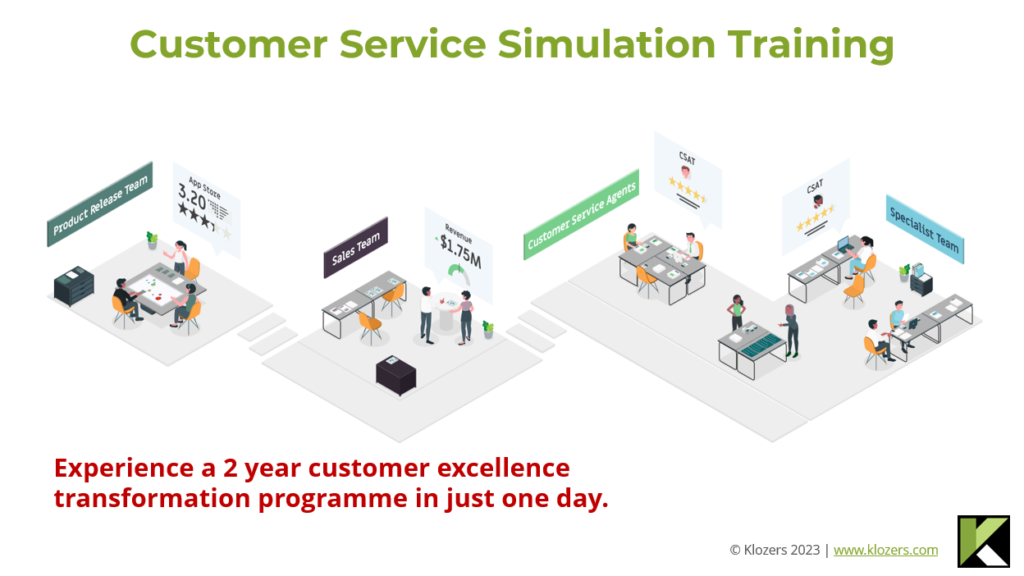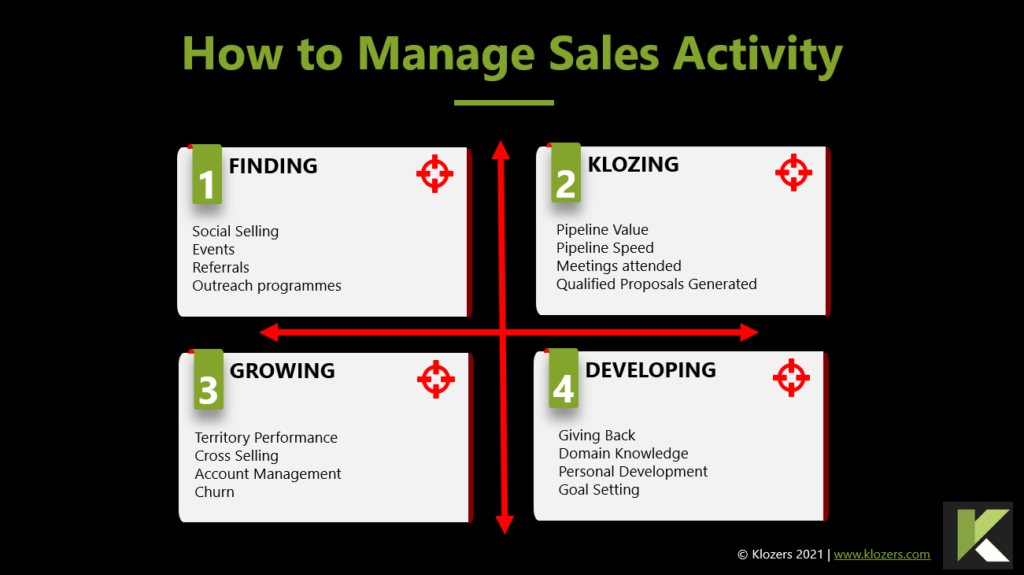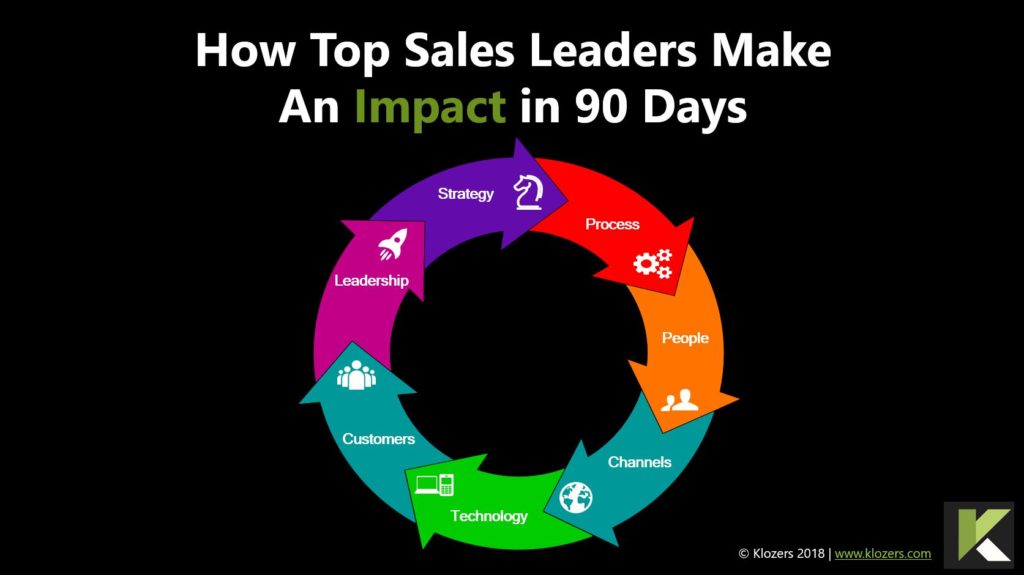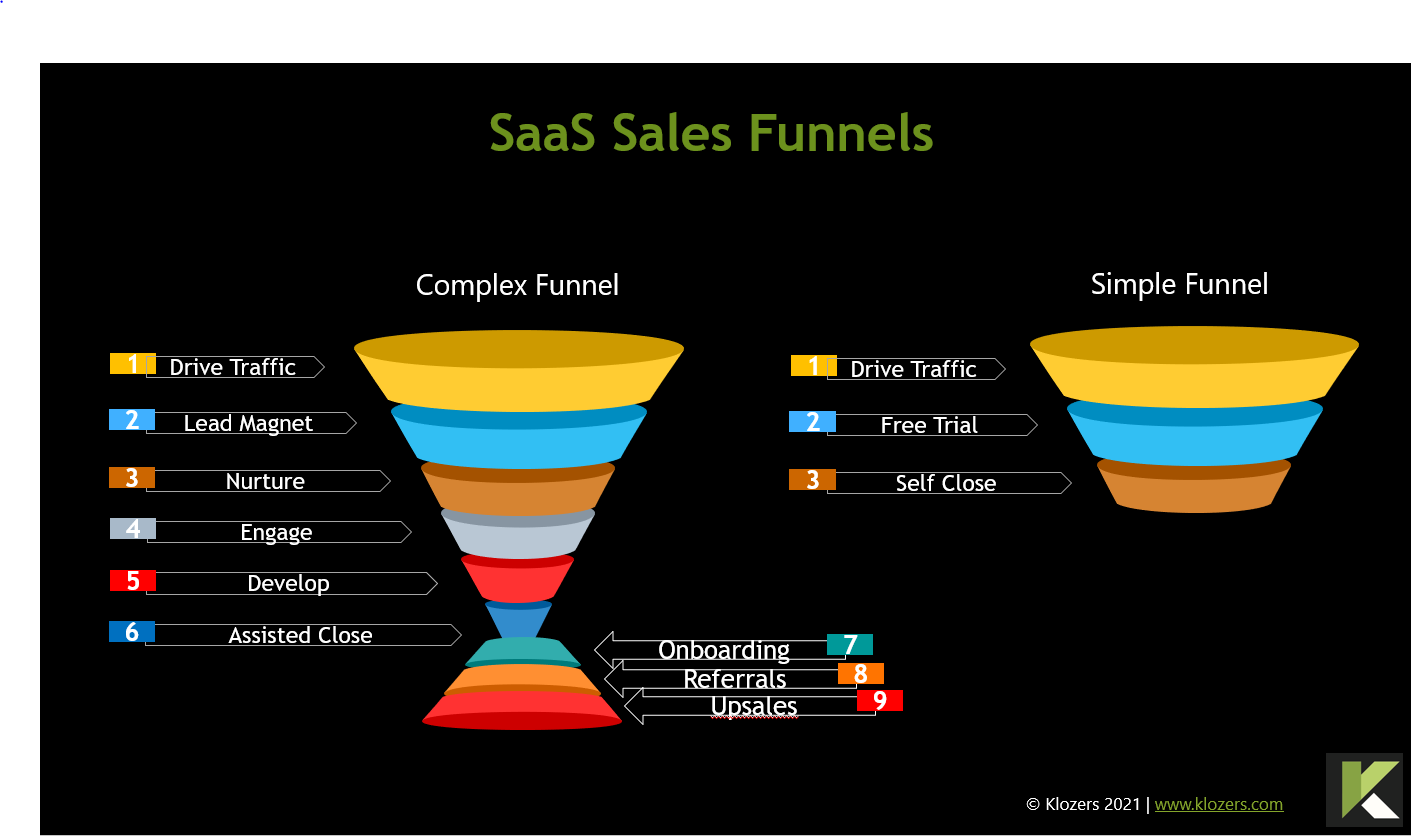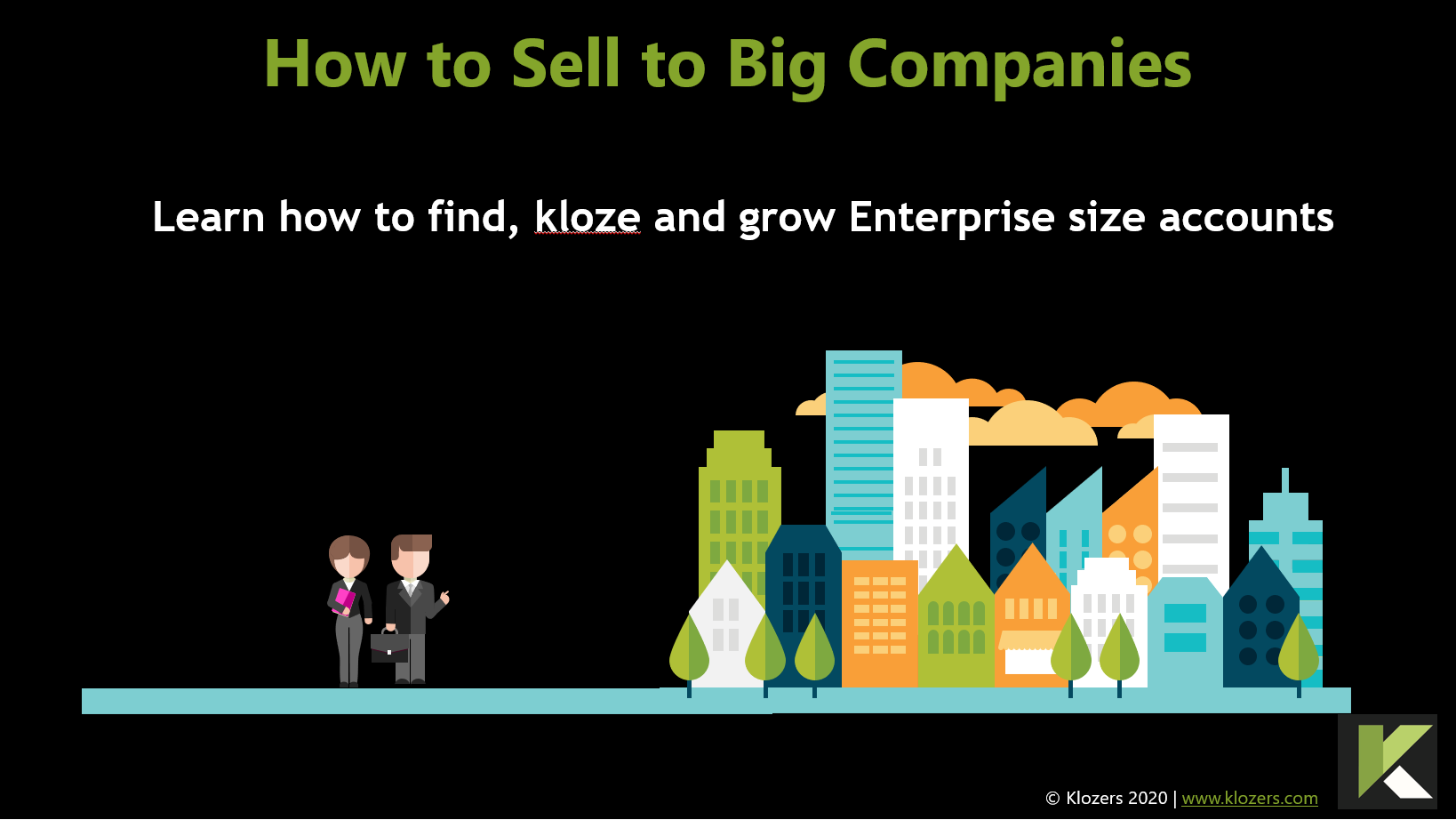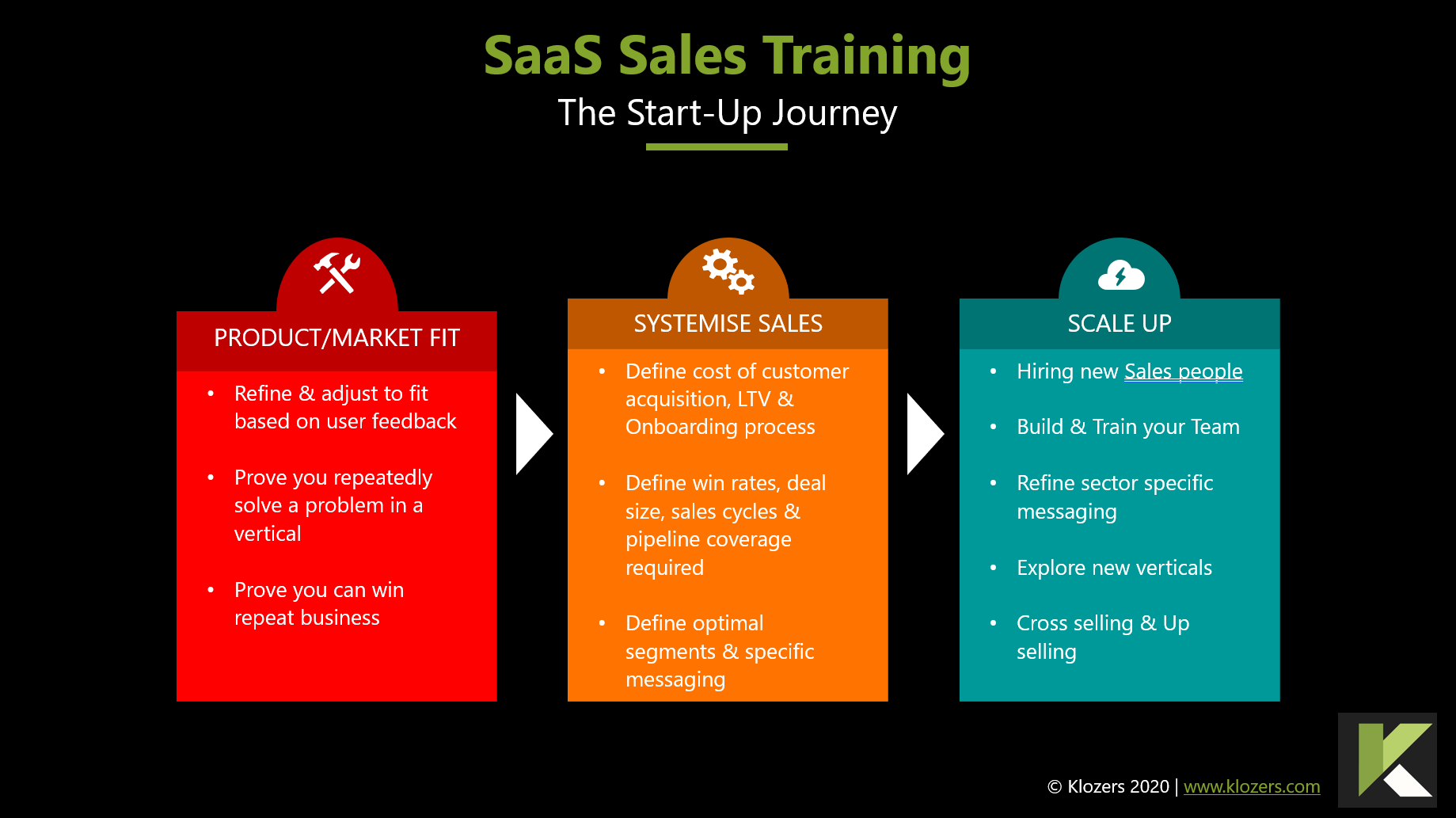Cursos de formación en ventas
Esta categoría de nuestro contenido se centra en los cursos de formación en ventas
Sales Negotiation Training
Key Negotiation Skills – Introduction
There is a common misconception that sales negotiation skills are only required towards the end of the sales process. The part in every sales process where costs and terms are agreed. Whilst this is undoubtedly true, it’s also true that the best salespeople are negotiating all the way through the sales process. In fact every Professional salesperson negotiates, every single day which is why it’s an important part of any training programme.
From negotiating with their children on what to have for breakfast, to negotiating with a Partner on where to go for dinner. In between times they will negotiate workloads with their line managers, negotiate meeting times with co-workers, negotiate dates & times for appointments with prospects and lastly negotiating sales contracts, project delivery and aftercare contracts. In short, Negotiation is actually unavoidable, and the ability to Negotiate is a core skill for every Salesperson.
Planning for Sales Negotiations
Like most things in life when it comes to Negotiation knowledge is power. The more information you have and better prepared you are then the more likely you will achieve a successful negotiation. Follow the information below to discover how to research and plan your next negotiation.
Sales Negotiation Goals
These are the needs, wants and desires of the parties involved in the negotiation. In business this can be complicated as not only may both sides have differing goals, but parties within each side may have differing and even conflicting Goals.
Goals can be subjective for example “We need to increase the confidence of our people.” or they can be more objective like “We need to reduce our overheads by 10 this quarter”. Either way it’s important to know both your own Goals and that of the other side. Important questions you must ask are:
- Have we identified all the Goals?
- What are the Prioritised Goals?
- What are the Business Goals?
- What are the Personal Goals?
- Are there conflicting Goals?
| Business Goals Examples | Personal Goals Examples |
| Strategic | Security |
| Change | Satisfaction |
| Growth | Peer Pressure |
| Improvement | Financial Gain |
Please note Goals are NOT the same as outcomes.
Example:
Goals – George is 65 years old and would like to retire (Goal). In order to fund his retirement he needs to sell his business but no one wants to invest a large sum of capital. Mike would like to buy a business (Goal) but does not have any capital to invest.
The Outcome is the Negotiated agreement that they come to.
Negotiation Options
These are all the possible solutions that satisfy the goals of both parties. They are all possibilities that both parties agree or say Yes to.
By investing time to explore all the Options then you are more likely to find:
- Alternative solutions
- Enable both parties to achieve their goals
- Reach the Best Possible Agreement (BPA)
Example:
Goals – George is 65 years old and would like to retire (Goal). In order to fund his retirement he needs to sell his business but no one wants to invest a large sum of capital. Mike would like to buy a business (Goal) but does not have any capital to invest.
Option – George can sell his business to Mike but rather than invest a lump sum he agrees to pay George on a Monthly basis from the profits for the next 5 years and hence fund his retirement.
Criteria for Negotiation
Criteria are the “terms” of any possible Option
Example:
Goals – George is 65 years old and would like to retire (Goal). In order to fund his retirement he needs to sell his business but no one wants to invest a large sum of capital. Mike would like to buy a business (Goal) but does not have any capital to invest.
Option – George can sell his business to Mike but rather than invest a lump sum he agrees to pay George on a Monthly basis from the profits for the next 5 years and hence fund his retirement.
Criteria – George needs to guarantee a minimum payment every month regardless of the profitability of that month. Mike needs to ensure ensure he will not be liable for any warranty, liability or compensations claims from the period before he take responsibility/ownership of the business.
Get expert Sales Negotiation Training from our Sales Coaches
CNA – Cost of No Agreement
Not all Negotiations end in an agreement, it is therefore vital before entering into any Negotiation that you first work out what the Cost of No Agreement is for both parties. The costs of no agreement can be both Objective and Subjective.
Example:
Goals – George is 65 years old and would like to retire (Goal). In order to fund his retirement he needs to sell his business but no one wants to invest a large sum of capital. Mike would like to buy a business (Goal) but does not have any capital to invest.
Option – George can sell his business to Mike but rather than invest a lump sum he agrees to pay George on a Monthly basis from the profits for the next 5 years and hence fund his retirement.
Criteria – George needs to guarantee a minimum payment every month regardless of the profitability of that month. Mike needs to ensure ensure he will not be liable for any warranty, liability or compensations claims from the period before he take responsibility/ownership of the business.
CNA – George does not have the financial resources to retire (Objective) however he has been trying unsuccessfully to sell his business for three years and is now desperate (Subjective) for a solution. Mike is keen to buy a business (Objective) but knows there are hundreds of businesses for sale and he is pretty relaxed (Subjective) if this deal doesn’t go through another one will come along.
The Subjective Cost of No Agreement can be more powerful than the Objective ones as people make decisions emotionally and then justify their position intellectually afterwards.
BATNA – Best Alternative to No Agreement
Not all Negotiations end in an Agreement, it is therefore vital before entering into any Negotiations that you first work out what the Best Alternative to No Agreement is. In some cases you may well experience that the other party is so entrenched in their position that they have no desire to Negotiate. BATNA is typically but not always, an alternative course of action that can be taken if no agreement is reached.
BATNA helps you prepare for a Negotiation by:
- Helps prevent you from agreeing to something you will regret
- Defining your Minimum Possible Agreement (MPA)
- Provides you with a Plan B
- Helps prevent you from over or underestimating the your own and the other party’s position
- Helps you understand where the leverage is
- Identifying alternative Options
Example:
Goals – George is 65 years old and would like to retire (Goal). In order to fund his retirement he needs to sell his business but no one wants to invest a large sum of capital. Mike would like to buy a business (Goal) but does not have any capital to invest.
Option – George can sell his business to Mike but rather than invest a lump sum he agrees to pay George on a Monthly basis from the profits for the next 5 years and hence fund his retirement.
Criteria – George needs to guarantee a minimum payment every month regardless of the profitability of that month. Mike needs to ensure ensure he will not be liable for any warranty, liability or compensations claims from the period before he take responsibility/ownership of the business.
CNA – George does not have the financial resources to retire (CNA) and has been trying unsuccessfully to sell his business for three years and is now desperate for a solution. Mike is keen to buy a business and has spent £3,000 with Solicitors and Accountants thus far completing his due diligence on the company.
BATNA – George is in discussion with his Lawyers to explore the possibilities of a Management Buyout for the business. Mike knows there are hundreds of businesses for sale and he is pretty relaxed if this deal doesn’t go through another one will come along.
Concessions for Negotiation
A concession is something given to the other party in furtherance of the agreement. These concessions should be identified in advance and segmented for both parties in terms of:
High Value – High Cost
High Value – Low Cost
Remember – Never give anything away without receiving something of equal or greater value in return.
Example:
Goals – George is 65 years old and would like to retire (Goal). In order to fund his retirement he needs to sell his business but no one wants to invest a large sum of capital. Mike would like to buy a business (Goal) but does not have any capital to invest.
Option – George can sell his business to Mike but rather than invest a lump sum he agrees to pay George on a Monthly basis from the profits for the next 5 years and hence fund his retirement.
Criteria – George needs to guarantee a minimum payment every month regardless of the profitability of that month. Mike needs to ensure ensure he will not be liable for any warranty, liability or compensations claims from the period before he take responsibility/ownership of the business.
CNA – George does not have the financial resources to retire (CNA) and has been trying unsuccessfully to sell his business for three years and is now desperate for a solution. Mike is keen to buy a business and has spent £3,000 with Solicitors and Accountants thus far completing his due diligence on the company.
BATNA – George is in discussion with his Lawyers to explore the possibilities of a Management Buyout for the business. Mike knows there are hundreds of businesses for sale and he is pretty relaxed if this deal doesn’t go through another one will come along.
Concessions – George is prepared to spend 3 months of his time ensuring during the handover period which is Low Cost to him as he will be retired but High Value to Mike as he is new to the industry and recognises the benefit of George’s experience.
Mike is prepared to move quickly which has no cost to him however this is High Value to George as the last thing he wants is a long protracted sale.
Negotiation Strategies
Aggressive Tactics
- Shoot the hostage
- This strategy is extremely aggressive as it involves an immediate offer to walk away with no deal which is designed to throw and unsettle the other party. This is often delivered in a reluctant tone “we don’t want to do this but…”,
- Delaying tactics
- When time is clearly on one parties side the process can often be deliberately slowed which is extremely effective when there are cost implications if talks over run. This tactic also applies if the other party has another meeting or needs to leave. The negotiator deliberately talks around the subject to delay the real conversation and then uses time to put pressure on the other party to come to an agreement.
- Poor Me
- This strategy is used to play the false victim that needs rescued by the other party.
- Last Minute.com
- As the name suggests this strategy involves the Negotiator agreeing to a solution right up until they are required to sign and then withdrawing. The withdrawal is usually followed up quickly with a counter offer at dramatically reduced terms.
- Misleading/lying
- Often Negotiators will make exaggerated claims or even lie so without hard data to support them you should discount these. They may also issue warnings and threats or make matters personal to unbalance you.
- Missing People
- Everyone knows the importance of having all the Decision Makers in the room but Negotiators may even turn up with complete strangers. In sales some companies will remove Sales People from the final negotiations. If the Sales People have a relationship with the other party they could be more empathetic and weaker negotiators. Turning up without warning with complete strangers also unbalances the other party.
Co-operative Tactics
- Agree on the Process
- Spend time up front agreeing the process and format of the Negotiations including what’s in scope and what’s not.
- Win Win Agreements
- Most professional Negotiators accept that any final agreement must be fair and sustainable for the life of the time period. In most business scenarios it should never be win at all costs as this destroys relationships.
- Matching Rights
- Offer the other party the right to match any solution that you receive. For example if one of two business partners decides to sell their shares to another party they may have the agreement that the other party gets first refusal if they match the offer.
- Contingent Agreements
- These are simply agreements based on future events. Financial Bonus may be tied to Performance. Football transfer fees can be include Contingent Agreements that provides the selling club additional revenue if a player is sold on and or if a player is capped by their country or simply makes a certain number of appearances.
- Multiple Offers
- When multiple offers are placed on the table this allows both parties to indicate preferences and encourages creativity as a winning hybrid offer can be formed. Placing one offer on the table often leads to a refusal and a stall in the process.
Sales Negotiation Checklist
1. Be prepared to walk away. Sales Negotiation is 70% Mindset and 30% Strategy and unless you are prepared to walk away, no strategy will help you.
2. It’s not what you charge it’s what your worth. Thoroughly research the market and discuss with the buyer the Value you bring to the table?
3. Take council from colleagues and external advisors and agree a pre-meeting strategy for the negotiations then PRACTICE.
4. Never give anything away without receiving something of equal or greater value in return.
5. Never enter a Negotiation without first providing your price and outline terms in advance, to anchor the prospect to a higher number and terms.
6. Where possible in high value deals do not include your sales people in Negotiations, as they will be emotionally involved in the sale and not objective.
7. Ensure everyone in your team have agreed in advance your trade-offs, your concessions, and your best alternative to a negotiated settlement.
8. You must be comfortable with silence and at most only talk 30% of the time, as the more you talk the more information you are giving away.
9. If it’s not Win Win then you run the danger of the prospect backing out or failing to implement your agreement, then the lawyers are the only winners.
10. Negotiation is between human beings, you must therefore be familiar with Human Psychology, DiSC, Neuro Linguistic and Programming.
Cómo construir un embudo de ventas de SaaS
1. ¿Qué es un embudo de ventas?
Un embudo de ventas es una secuencia de acciones, eventos o etapas por las que pasa un usuario antes de comprar un producto o servicio. Los embudos de ventas están diseñados para permitir a los profesionales del marketing seguir, registrar y optimizar el proceso de ventas para mejorar los resultados.
Puede obtener más información sobre nuestra formación en ventas de SaaS aquí.
2. Cómo construir un embudo de ventas de SaaS
Su embudo de ventas de SaaS es una parte esencial del éxito de sus aplicaciones. Si ofreces aplicaciones SaaS, uno de los pasos importantes que debes dar es crear un embudo de ventas repetible, escalable y rastreable.
¿Suena fácil? Pues piénsalo de nuevo. El embudo de ventas es el punto en el que muchas empresas de nueva creación que pasan a generar ingresos tienen dificultades y, en muchos casos, fracasan.
Antes de empezar a construir su embudo, merece la pena considerar en qué punto del recorrido de su aplicación se encuentra.
3. Las tres etapas principales del desarrollo de SaaS
Desgraciadamente, en el ámbito de las ventas nunca hay una solución única, y el punto de partida para construir un embudo de ventas de SaaS depende de dónde te encuentres, en términos de las tres etapas principales de un negocio de SaaS…
Estás en:
Fase 1: el inicio del viaje en el que el fundador y el equipo principal todavía están tratando de establecer el ajuste del producto al mercado.
Fase 2: en la que el fundador y los principales miembros del equipo han demostrado que el producto y el mercado encajan y que pueden implementar sistemas y procesos que otros pueden utilizar para vender.
Fase 3, el último obstáculo en el que se ha demostrado que el producto encaja en el mercado, se han identificado y probado los sistemas y procesos adecuados para escalar y ahora se está listo para escalar las ventas, centrarse en la adquisición de clientes y construir su MRR.
Las estrategias que utilice para construir un embudo de ventas de SaaS variarán en función de lo que haya aprendido exactamente en el paso 1 anterior.
Así que, a efectos de este ejercicio, supondré que se encuentra en el paso 1. Si todavía está luchando para construir un embudo de ventas en los pasos 2 y 3, entonces o se perdió algo en el paso 1 o algo ha cambiado que ha hecho que todo lo que aprendió en el paso 1 deje de funcionar.
4. Construya un embudo de marketing antes que su embudo de ventas
En cualquier negocio es importante que proporcione las condiciones óptimas para que su equipo de ventas tenga éxito. En el mundo del SaaS no basta con tener un gran sitio web, sino que se necesita un sitio web que:
a) se pueden encontrar sus productos y servicios en los principales motores de búsqueda: Google, Bing, Yahoo y YouTube
b) puede ser encontrado por los problemas que resuelve en los principales motores de búsqueda – Google, Bing, Yahoo y YouTube
c) puede convertir el tráfico web en clientes potenciales cualificados
Muchas empresas ignoran esto y se apresuran a crear un equipo de ventas salientes. El hecho es que cada potencial cliente potencial que su equipo de salida consiga interesar irá a su sitio web para hacer más investigación.
A menos que la experiencia en la web sea igual o mayor que la experiencia de los clientes potenciales con su equipo de salida, se desconectarán inmediatamente.
Para construir un embudo de marketing hay que crear “contenido convincente para el usuario”. Este es el contenido que el usuario busca activamente, no el contenido que su equipo de ventas y marketing quiere impulsar.
Su embudo de marketing SaaS es una parte esencial de su estrategia de ventas Inbound. Para hacerlo con éxito, tendrá que crear contenido de alta calidad en cada etapa del viaje del comprador, como se muestra a continuación.
El contenido debe contar sutilmente la historia de su marca y el éxito que ha aportado a otros usuarios. Convierte a tus primeros usuarios en los héroes, no en ti.
TOFU – Parte superior del embudo
La primera parte de su embudo de ventas, también conocida como TOFU, es la etapa de sensibilización del embudo. El cliente potencial es consciente de los problemas que tiene y está investigando soluciones.
Su sitio web debe tener un contenido que hable de estos problemas y que posicione a su empresa como los expertos en la materia. El contenido más popular aquí sería:
Guías de cómo hacerlo
Vídeos explicativos
Entradas de blog
Imanes de plomo
En esta fase, el cliente potencial está en modo de investigación, no de compra, y simplemente está recopilando información.
Es posible que su cliente potencial ni siquiera esté interesado en las soluciones en esta fase, ya que todavía está tratando de autodiagnosticar con precisión sus propios problemas. Es poco probable que su cliente potencial quiera hablar con ventas en esta fase.
Le recomendamos que utilice la automatización del marketing para hacer un seguimiento de los artículos/páginas por los que sus clientes potenciales entran en el sitio, ya que este es el problema que más les preocupa. Saber esto puede facilitar que el departamento de ventas tenga una conversación relevante con ellos.
También puede tener cierto éxito al involucrar al cliente potencial con chatbots en su sitio, sin embargo, muchos querrán permanecer en el anonimato en esta etapa.
Mitad del embudo
En la mitad de su embudo de ventas es cuando los clientes potenciales comienzan a evaluar soluciones específicas basadas en lo que aprendieron en la etapa 1. El contenido de la parte media del embudo incluiría:
Presentaciones
Demostraciones
Estudios de caso
En la práctica, habrán creado algún tipo de lista de proveedores potenciales, y luego profundizarán en los detalles de cada solución potencial.
En esta fase, es posible que el cliente potencial no se comprometa con usted, ya que a menudo simplemente está investigando en nombre de otras personas dentro de su propia organización y su prioridad sigue siendo la recopilación de información.
Parte inferior del embudo
Cuando su cliente potencial ha llegado al final de su embudo de marketing, en muchos casos ya ha “comprado” un proveedor o una solución en particular.
Han tomado su decisión en gran medida por su experiencia de la marca en la web, su mensaje de ventas y su capacidad para posicionarse no sólo como un líder de opinión sino como un líder de pensamiento que entiende sus problemas.
El contenido de la parte inferior del embudo incluiría cosas como
Precios
Cuadros comparativos
Testimonios
Comentarios
En el caso de las soluciones más sencillas y de menor precio, los usuarios están dispuestos a probarlas si se les ofrece una llamada a la acción (CTA), mientras que en el caso de las soluciones más caras y complejas, se dirigirán a las ventas.
La imagen siguiente muestra cómo un embudo de marketing sencillo se convierte en una cesta de la compra y cómo una venta B2B más compleja se convierte en un cliente potencial para ventas.
El éxito no radica en elegir el modelo adecuado, sino en construir su propio modelo basándose en los datos y en la prueba y el error.
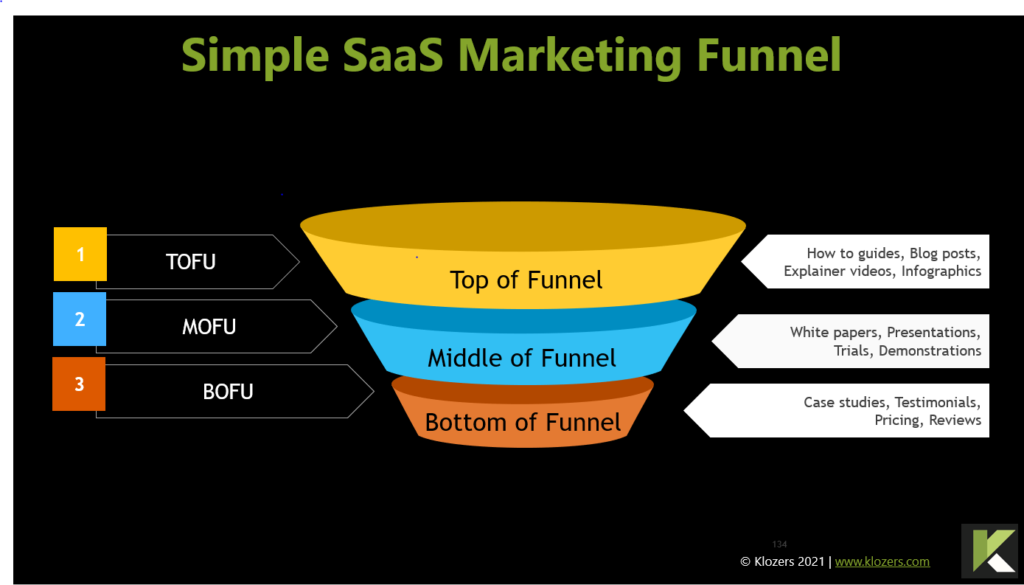
La mayoría de los programas de marketing hacen un seguimiento del comportamiento de los usuarios en su sitio web y pueden utilizar la puntuación de clientes potenciales para alertar a los vendedores de cuándo es el mejor momento para ponerse en contacto de forma proactiva con los clientes potenciales.
Según nuestra propia experiencia, el momento es casi siempre demasiado temprano y un programa de nutrición de clientes potenciales bien definido es igualmente eficaz.
Para ello, debe incluir en su marketing al menos tres imanes de clientes potenciales diferentes que le ayuden a convertir a los visitantes de su web en suscriptores para poder mantener el contacto.
5. Publicidad para llenar su embudo de ventas
Muchas empresas llenan con éxito su embudo de ventas a través de la publicidad. La publicidad digital ha madurado hasta un nivel que permite un seguimiento y una presentación de informes significativos que le permiten, en cuestión de semanas, comprender cuál será su ratio de conversión y su CAC.
En primer lugar, abogamos por las “campañas de reorientación”. Esto es simplemente el proceso de colocar anuncios frente a las personas que ya han visitado su sitio web.
Los estudios demuestran que el retargeting es siete veces más eficaz que las nuevas campañas, por lo que lo recomendamos como punto de partida.
Esta estrategia funciona muy bien con una fuerte campaña de marketing de contenidos. El canal de adición más popular para B2B sería LinkedIn, sin embargo, a muchas empresas también les ha ido bien con Facebook e Instagram.
Ni que decir tiene que esto lo definirá su público. La publicidad puede utilizarse en embudos sencillos para impulsar las ventas y en otros más complejos para impulsar nuevas consultas para los representantes de ventas.
Las ventas más complejas pueden necesitar una secuencia definida en la que los usuarios hagan clic y se anuncien para recibir un lead magnet con un coste de 3 dólares por cada lead.
Si posteriormente consigue convertir el 5% de estos nuevos clientes potenciales, puede atribuir 60 dólares por venta de la publicidad a su CAC.
Se puede construir una secuencia o modelo rastreable a partir de cualquier actividad, no sólo de la publicidad. Por ejemplo, los eventos, los seminarios web y la televenta le permiten comprender qué actividades son las más rentables, no sólo para llenar su embudo, sino para convertirlas en pedidos.
6. Cómo construir un embudo de ventas de SaaS
Su embudo de ventas variará en función de su estrategia de ventas. ¿Vende su aplicación directamente o a través de socios? ¿En qué canales ha decidido centrarse inicialmente?
1. Identifique su perfil de cliente potencial perfecto. Esta es la versión de los representantes de ventas de un personaje de marketing. Incluye todo lo que incluiría un personaje de marketing, además de información adicional que ayuda a las ventas a entender y comunicarse a un nivel más profundo con el cliente potencial.
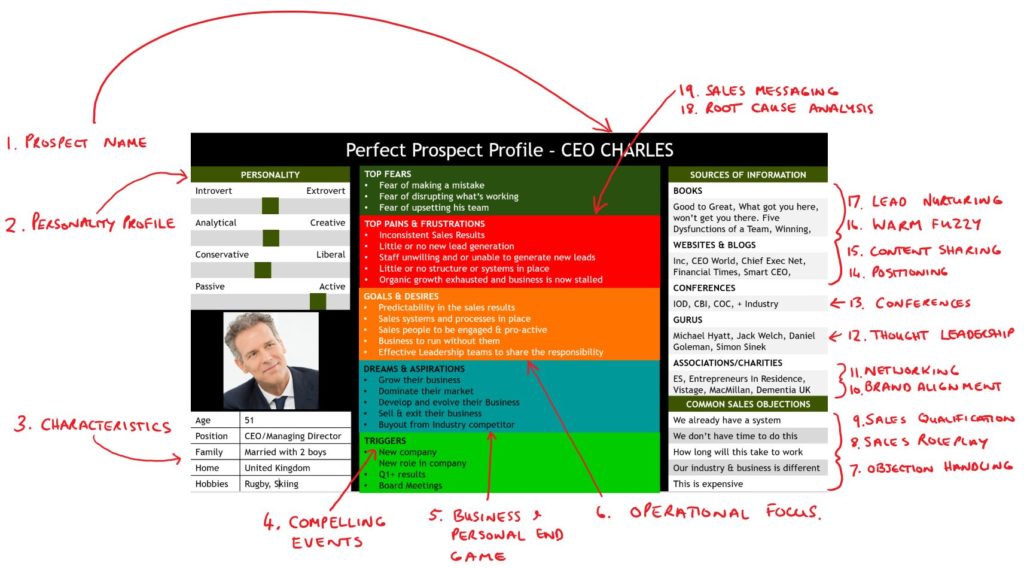
2. Construya su mensaje de ventas. Parte de la adecuación del producto al mercado consiste en comprender qué problema empresarial o personal resuelve su producto.
Según nuestra experiencia, los servicios SaaS más exitosos son las soluciones empresariales que resuelven problemas de negocio.
Una vez que entiendas cómo se relaciona esto con tu propio producto/servicio a un nivel profundo, puedes empezar a construir tu mensaje de ventas.
Son las palabras y el lenguaje matizado que ha demostrado que los clientes potenciales conectan con él. No basta con conocer su propio negocio y sus soluciones, sino que debe conocer a sus clientes.
Debe saber exactamente cómo su solución ayuda a su cliente a ahorrar dinero, a ganar dinero y a hacer su vida más fácil.
3. Campaña de generación de contactos.
Una vez que haya identificado a sus clientes potenciales y haya construido su mensaje de ventas, tendrá que empezar a trabajar en una campaña de generación de clientes potenciales.
Existen dos enfoques principales para la generación de clientes potenciales, a saber
a) Generación de clientes potenciales entrantes. Las campañas de generación de contactos entrantes son aquellas en las que el cliente potencial se pone en contacto con usted en primer lugar. Pueden rellenar un formulario en su página web, llamarle por teléfono o enviarle un correo electrónico. Para generar clientes potenciales de ventas entrantes tendrá que realizar algún tipo de creación de contenidos, campañas publicitarias, seminarios web, programas de referencia o SEO.
b) Generación de contactos salientes. Las campañas de generación de contactos salientes son aquellas en las que se llega a los clientes potenciales por teléfono, correo electrónico, correo directo, eventos o marketing basado en cuentas. Las campañas de salida significan invariablemente que tendrá que crear un equipo de llamadas salientes, lo que puede resultar caro.
La mayoría de las empresas de SaaS utilizan una combinación de inbound y outbound, sin embargo, casi siempre hacen hincapié en una más que en la otra.
A título orientativo, los servicios SaaS de menor coste y dirigidos a las PYME están orientados al marketing y tienen un enfoque predominantemente Inbound.
Los servicios SaaS que son más costosos y que se dirigen a organizaciones del mercado medio a la empresa tendrán un enfoque más dirigido a las ventas a través del marketing basado en cuentas.
7. ¿Cuáles son las etapas de un embudo de ventas de SaaS?

Las etapas de su embudo de ventas son simplemente una serie de pasos por los que se mueven sus clientes potenciales para realizar un pedido.
Estas etapas pueden variar mucho y no existe un embudo que pueda aplicarse a todas las aplicaciones. Aunque las etapas sean las mismas, el método con el que se mueve a los clientes potenciales a través del embudo puede variar.
Su embudo de ventas es un buen lugar para empezar a recoger datos con el fin de medir el rendimiento y hacer mejoras con el tiempo.
En general, los prospectos deben moverse a través del embudo de ventas tan rápido como sea posible – esto se llama el ciclo de ventas o la velocidad de la tubería.
Medir la velocidad a la que los prospectos se mueven a través del ciclo le permite identificar los bloqueos en su embudo y las áreas donde los prospectos se ralentizan.
En estos puntos “conflictivos” es donde debe buscar las mejoras.
8. ¿Cuándo debo hacer una demostración de mi producto SaaS a los clientes?
El momento de las demostraciones de aplicaciones SaaS dentro del proceso de ventas ha sido objeto de debate para muchas empresas.
Lamentablemente, la respuesta a la pregunta es “depende”. Muchas empresas hacen una demostración de su aplicación con éxito al principio del proceso de ventas, pero también hay muchas que hacen una demostración al principio y luego sus clientes potenciales desaparecen en el agujero negro del correo de voz y los correos electrónicos sin respuesta.
En resumen, cuanto más barata y sencilla sea la solución, más pronto se podrá realizar la demostración, y cuanto más cara y compleja sea la solución, la demostración deberá realizarse lo más tarde posible en el proceso de venta.
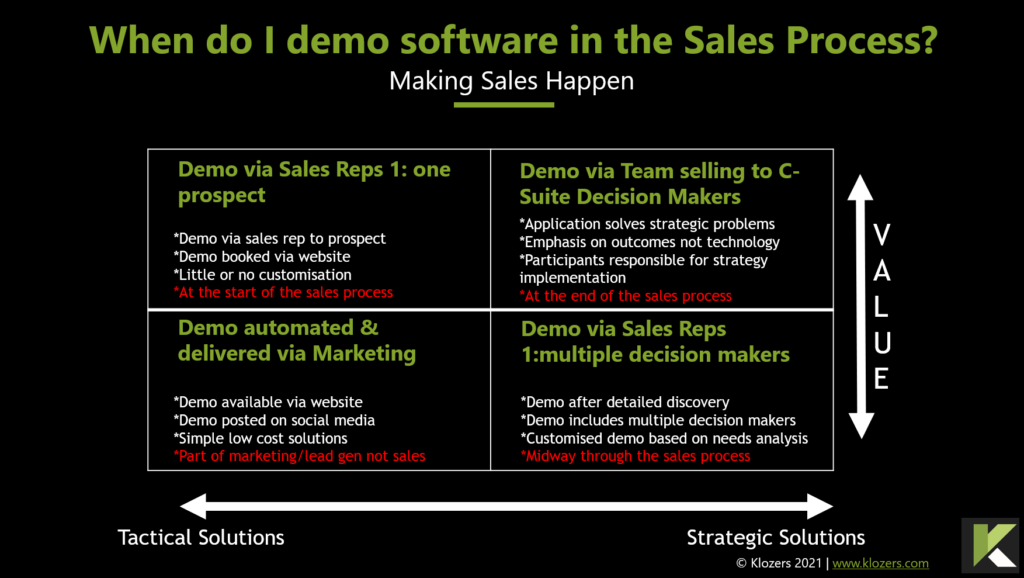
La realidad es que los empresarios y los vendedores tienden a apresurarse a hacer una demostración de su aplicación, con la esperanza de que la demostración convenza al cliente potencial para que se inscriba.
Incluso si el cliente potencial está cualificado y es adecuado, una demostración sin ningún tipo de diagnóstico del dolor del cliente potencial corre el riesgo de perderlo.
Su cliente potencial necesita saber que usted conoce y que entiende su mundo. Esto sólo puede lograrse mediante un interrogatorio inteligente y específico. Si quieres acelerar la venta, ralentiza la venta.
La demostración suele ser el mayor punto de apoyo de los vendedores y si la regalas demasiado pronto perderás el apoyo y, con toda probabilidad, el cliente potencial.
Como regla general, lleve la demostración de la aplicación lo más lejos posible en su proceso de ventas.
Las demostraciones cuestan tiempo y dinero, especialmente en el caso de las ventas complejas, en las que a menudo se requiere una demostración a medida.
Cualquier demostración a medida debe entregarse únicamente a los responsables de la toma de decisiones en el equipo de compra de los clientes potenciales. Si lo considera oportuno, puede incluso realizar dos demostraciones dentro del proceso de venta; no hay más reglas que la de que si funciona, hágalo.
La mayoría de los representantes de ventas cometen el error de utilizar esta parte del proceso de venta para explicar con más detalle las ventajas del producto.
Cuando lo cuentas no estás vendiendo. Utilice preguntas de sondeo inteligentes para que el cliente potencial le diga cómo la solución resolverá sus problemas empresariales.
Debe evitar hablar de las características que cree que son relevantes para ellos. Si no se descubre esto en la fase de descubrimiento del proceso de ventas, es intrínsecamente arriesgado introducir algo nuevo más adelante en el proceso.
En el caso de las soluciones más sencillas y de menor precio, se dará cuenta de que están dispuestos a hacer una prueba, mientras que en el caso de las soluciones más caras y complejas, se pondrán en contacto con un representante de ventas.
Para demostrar que han actuado con la debida diligencia, siempre hablarán con dos o tres posibles proveedores.
No se trata necesariamente de ganar a un proveedor por el precio, pero a veces necesitan validar ante el grupo de compras más amplio de su organización por qué tienen una preferencia.
Las pruebas de las aplicaciones también son una buena forma de conseguir que los usuarios se registren, sin embargo, el ratio de conversión de pruebas a cierre suele ser pobre en la mayoría de los casos de SaaS.
Dependiendo del precio, podría ofrecer una prueba gestionada, para que puedan evaluar su software mientras usted los gestiona más adelante en el proceso de venta.
Durante una prueba, el cliente potencial puede ver cómo le funcionará el producto en la práctica. Es importante programar el juicio con prudencia y asegurarse de haber acordado de antemano lo que sucederá si el juicio tiene éxito.
Hemos creado el gráfico anterior para tratar de explicar visualmente cómo podría funcionar esto para su organización.
Cabe destacar que en el ejemplo, la mayor parte de su CAC será el marketing, mientras que en el embudo más complejo sus costes incluirán el marketing, las ventas y la incorporación del cliente.
9. Ejemplos de embudo de ventas SaaS
Los embudos de ventas que aparecen a continuación son ejemplos. NO debe replicarlas a menos que se ajusten a su proceso de ventas.
Están diseñados para ser un punto de partida para aquellos que buscan desarrollar un embudo de ventas.
Como puedes ver en el gráfico, hay muchas alternativas a las etapas que van a conformar tu embudo de ventas dependiendo del tipo de embudo que estés creando.
Para los embudos puramente digitales podrías tener:
Página de aterrizaje de Lead Magnet – donde los clientes potenciales llegan después de hacer clic en su anuncio
Página de confirmación: confirma la oferta gratuita, la prueba o la compra
Página de venta adicional: donde los clientes potenciales tienen la oportunidad de añadir servicios adicionales o mejorar su nivel.
Página de pago – donde los clientes potenciales pagan por el servicio
Página de felicitación o de agradecimiento: en la que puede señalar a los clientes potenciales los pasos siguientes adecuados.

10. Métricas del embudo de ventas de SaaS
En lo que respecta a las métricas, creemos que éstas son las métricas y los KPI comunes de las operaciones de ventas con los que la mayoría de la gente está familiarizada. No hace falta decir que estas métricas son importantes y que debería registrarlas y elaborar informes sobre ellas.
LTT – Conversión de clientes potenciales en pruebas
Es el número de clientes potenciales que se han convertido en una prueba.
DCR – Tasa de conversión de demostración
El número de demostraciones que se convierten con éxito en la siguiente etapa del proceso de ventas.
TTS – Conversión de prueba a venta
Es el número de clientes potenciales de la prueba gratuita que se han convertido en clientes de pago.
LTV – Valor de vida del cliente
Es el valor total medio que un cliente gastará antes de abandonar el servicio. Irónicamente, esto puede ser más difícil de medir cuanto mejor sea su producto, ya que, si los clientes no se van, no sabrá cuánto tiempo se quedan y su valor total para el negocio.
Churn – Número de clientes que se van
Los clientes se irán y eso no siempre es malo. Si los clientes que se marchan se ajustan a su PCI (perfil de cliente ideal), entonces tiene un problema. Los clientes que se marchan y que no se ajustan a su PCI pueden estar liberando recursos valiosos que pueden gastarse en su PCI.
MRR – Ingresos recurrentes mensuales
Los ingresos recurrentes mensuales le dan una visión general de su éxito, sin embargo, es sólo una visión general y necesita mirar los detalles dentro de los datos para obtener una imagen más precisa.
ARR – Ingresos recurrentes anuales
Los ingresos recurrentes anuales ofrecen una buena visión general del negocio, pero al igual que el MRR, debes estudiar todos los datos para obtener una imagen más precisa de la salud de tu empresa.
Ciclo de ventas – El tiempo que transcurre desde el contacto inicial hasta el cierre del pedido
Suele ser corto para las soluciones más sencillas de menor valor y más largo para las ventas complejas a empresas. Por ejemplo, una venta a un banco de nivel 1 puede tardar 18 meses desde el contacto inicial hasta el cierre.
CAC – Coste de adquisición de clientes
Es importante entender cuánto le cuesta adquirir un solo cliente. En un mundo ideal lo descubrirías en las fases iniciales del negocio, cuando estás probando la propuesta de valor. Sin esta cifra es imposible poner en marcha los sistemas y procesos para escalar el negocio, ya que no sabrás cuánto puedes gastar en el marketing y las ventas.
Churn negativo –
El churn negativo es una poderosa métrica de crecimiento que indica que los ingresos procedentes de la venta adicional y cruzada de los clientes existentes superan los ingresos perdidos cuando los clientes se van.
11. Presentación de propuestas de SaaS
Después de la demostración final, nunca debes ofrecerte a enviar una propuesta.
Las propuestas cuestan tiempo y dinero, y si su cliente potencial está interesado , le pedirá una propuesta.
Si su cliente potencial no le pide una propuesta, eso le indica que no está interesado en trabajar con usted y que debe retroceder en el proceso de ventas para entender en qué se ha equivocado.
Cuando el proceso de venta se estanca, rara vez se debe a algo que hayas hecho mal en ese momento; lo más frecuente es que se trate de algo que hayas pasado por alto antes en el proceso de venta.
Asegúrese de que todas las ventajas del software les han sido explicadas con claridad y se han comparado con sus necesidades.
En la medida de lo posible, pida a su Caballero Blanco que le ayude a crear la propuesta y compruebe con él un borrador antes de enviar la copia oficial.
Antes de enviar su propuesta debe tener claro cuáles son los siguientes pasos si gana o pierde.
Sin esto, lo más probable es que te pases los próximos tres meses persiguiendo fantasmas en el buzón de voz.
12. Fijar el precio de sus contratos de SaaS
Muchas empresas ofrecen precios limitados o no ofrecen ningún precio en su sitio web porque no quieren que sus competidores vean sus precios, o porque piensan que eso ahuyentará a los clientes potenciales.
Debe estar orgulloso de su precio y del valor que aporta. Deje que la competencia le rebaje y que emplee todos sus recursos en negocios no rentables.
La gente rara vez compra la solución más barata, así que permita que sus clientes potenciales le rebajen el precio.
Si todavía le preocupa que los precios aparezcan en su sitio web, piense en cómo se siente cuando está investigando una solución que le interesa y descubre que la página de precios está llena de POA.
Si eres como la mayoría de la gente, esto te resulta realmente molesto y pasas rápidamente al siguiente proveedor potencial.
Por último, otra de las ventajas de mostrar con orgullo sus precios es que excluye a todo aquel que no esté dispuesto a invertir a ese nivel.
Esto puede ahorrarle mucho tiempo y recursos con clientes potenciales que simplemente tienen un nivel de presupuesto diferente.
Existen numerosas estrategias de fijación de precios a su disposición, sin embargo, según nuestra experiencia, lo único que está garantizado es que usted cambiará sus precios.
Como regla básica, si sus precios son demasiado elevados para un contrato a corto plazo o una prueba de pago, es posible que el cliente potencial no experimente todas las ventajas del software antes de que el contrato llegue a su fin y decida no renovar.
En la medida de lo posible, debe recompensar a los clientes potenciales durante el periodo de prueba por añadir información y utilizar el servicio.
Por ejemplo, ofrecer una prueba más corta e incentivar a los usuarios si completan la configuración de su perfil/cuenta.
Ofrezca un periodo adicional gratuito para animarles a utilizar el producto, por ejemplo, si cargan datos en el sistema.
La idea es “embarcar” a tus nuevos usuarios paso a paso y hacer que tu producto sea lo más pegajoso posible.
Si el cliente potencial quiere seguir adelante, debería utilizar contratos con firma digital para acelerar el proceso de venta.
No envíes nunca contratos por correo electrónico ni enlaces a contratos digitales, ya que pueden ser fácilmente ignorados.
Consiga que el cliente potencial se ponga al teléfono y hable con él sobre el contrato. Una vez que hayan aceptado todo el contrato, simplemente pídeles que firmen mientras los tienes al teléfono.
De este modo, usted mantiene el control del proceso de venta.
13. Por qué el embudo de ventas es tan importante para los proveedores de SaaS
Muchas empresas han fracasado después de esforzarse por implementar un embudo de ventas. El marketing y la venta de productos SaaS pueden ser increíblemente difíciles, y es probable que sus clientes objetivo ya estén abrumados con las ofertas de los proveedores de software de la competencia.
Piensa en qué parte del presupuesto existente de los compradores vas a ganar ingresos. ¿A qué competidores directos o indirectos les quitará presupuesto?
Es posible que compita con algunas de las marcas más grandes y poderosas del mundo que ofrecen soluciones genéricas a los mismos problemas que usted resuelve.
Esto significa que debe ofrecer algo distintivo que sus clientes realmente requieran.
Un estudio de CB Insights afirma que el 42% de las nuevas empresas de SaaS fracasan porque ofrecen productos que sus clientes no necesitan.
Es esencial convencer a los clientes potenciales de que su software ofrece un valor real.

14. Gestión de las expectativas de los clientes potenciales
La creación de un embudo de ventas consiste en construir un recorrido desde el visitante de la web hasta el suscriptor, pasando por las demostraciones y los recorridos y terminando con la firma del contrato.
Su embudo de ventas debe hacer hincapié en cada una de las etapas clave por las que pasarán sus clientes potenciales en su camino hasta llegar a un acuerdo.
Sea abierto, franco y comparta las etapas del proceso por adelantado con sus clientes potenciales.
Debe prestar mucha atención a cualquier punto de fricción que pueda producirse a medida que sus clientes potenciales se desplazan por su canal de ventas.
Esto le dará la oportunidad de realizar mejoras en su embudo en el futuro.
Lo más importante es que registre todos los datos de su embudo de ventas.
Esto le ayudará a tomar decisiones basándose en hechos y no en sus instintos. Puede llevar tiempo que su embudo de ventas sea totalmente eficaz, y es posible que tenga que hacer varios ajustes antes de tener un embudo de ventas realmente optimizado.
Muchos clientes no tienen una idea clara de lo que necesitan cuando se encuentran con usted por primera vez. Proporcione soluciones, no sólo productos, ayudando a los clientes potenciales a establecer la conexión entre ambos.
También es cierto que los usuarios suelen comprar lo que quieren y no lo que necesitan.
Por eso es tan importante hacer preguntas específicas para poder determinar con precisión cuáles son sus necesidades y así poder posicionar su software de la manera más favorable.
Estas preguntas también le indicarán lo cerca o lejos que están de tomar una decisión.
15. El auge de las soluciones SaaS
Parece que todo en el mundo está ahora impulsado en línea por las aplicaciones SaaS. Desde Netflix y Amazon Prime hasta LinkedIn y Microsoft M365, ahora estamos rodeados de soluciones SaaS de una u otra descripción.
Desde el punto de vista financiero, SaaS tiene sentido, ya que evita un gran gasto de capital por adelantado y reduce el riesgo de la solución.
Al fin y al cabo, si no funciona, lo normal es que sólo esté bloqueado un máximo de 12 meses. Otras ventajas de SaaS son que normalmente se despliega rápidamente y no requiere mantenimiento por parte del cliente.
Las actualizaciones suelen ser automáticas y, por lo general, se ofrecen a los clientes niveles de servicio garantizados.
Las copias de seguridad y la recuperación de datos suelen llevarse a cabo en nombre del cliente, para que pueda centrarse en lo que mejor sabe hacer, con la seguridad de que todo lo gestionan los propios desarrolladores de software.
Lockdown ha puesto el turbo en el SaaS
El trabajo a distancia estaba en auge incluso antes de la pandemia, por lo que el hecho de que los productos SaaS permitan a las personas trabajar y colaborar desde cualquier lugar sólo ha servido para que el SaaS se integre aún más en nuestra vida cotidiana.
Hay miles de nuevos productos SaaS que se están desarrollando en todos los países del mundo, por lo que la competencia es feroz; sin embargo, no parece que el apetito de los consumidores y las empresas por las soluciones SaaS tenga fin.
Un embudo de ventas coherente podría ser la diferencia entre que su producto sea un éxito viral o que se vea obligado a volver a la mesa de dibujo.
How to Sell to BIG Companies
How to Sell to Big Companies

Discover how to Find, Kloze and Grow Large Enterprise Accounts
Next FREE session – Tuesday 2nd Feb 2021
We’ve got all the templates & tools to make it easy for you

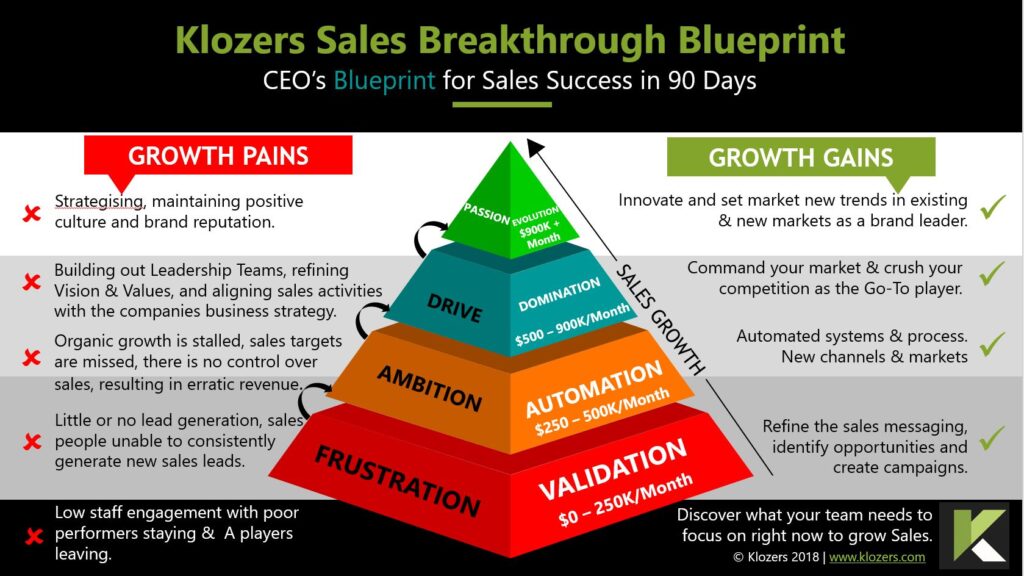
How to Sell to Big Companies. In order to sell to big companies you need to first create a shortlist of targets that meet your perfect prospect profile. Next, focus all your sales and marketing resources to research and create a unique sales approach for multiple contacts within the big company you are selling to.
What’s Inside
SESSION 1
The WHO
Introduction to Enterprise Selling
Selecting the right targets
Segmenting your accounts
Mastering the complex sale
Prep for Session 2
Get this session FREE
SESSION 2
The WHAT
The Door Opener
Right content, right contact, right time
How to write persuasive copy
The cadence of big account selling
The profitable, easy to deliver and replicate offer
SESSION 3
The HOW
What to say to Big Companies
How to control the sales conversation
The Contact Plan
Listen & Learn LIVE over the coaches shoulder
Your personal Action Plan
Course Author

Iain Swanston
Founder, Klozers
After 35 years in B2B sales Iain just loves solving sales problems.
If you’ve ever attended one of his live events you’ll know, even during the breaks and after the event he always likes talking about sales. Iain is an Author, Speaker & our Lead Sales Coach.
Iain is on a mission to make sales easier for B2B companies and their salespeople.
“In the short time I’ve been working with Klozers I’ve used his guidance to develop positive new sales activities, techniques and a mindset that has significantly helped my sales confidence. As a results I’ve already seen excellent performance benefits that are directly attributable to working to the coaching.”
Alan Wood
Scotland Director
Salesforce Marketing Cloud
“This was my first ever sales training and genuinely still the most pertinent in my sales career. Iain taught us how to take leads through the sales journey from lead to opportunity to closure, I still use these skills today and encourage my colleagues to do the same. My earnings have more than doubled since Iain gave that pertinent training and his latest blogs have been shared internally between our sales and marketing teams as the advice rings true to what we are currently working on as a department”
Lynne Hall
Strategic Accounts Manager
E-On Energy
“My coach was really flexible and was happy to talk in between my scheduled coaching slots, especially when I had burning questions and needed support fast. The debriefing calls we had after my sales meetings not only helped me understand where I could improve, they also gave me the right words to say, in the right sequence and at the right time.“
Elliott Boll
Enterprise Learning Consultant
Docebo
Get started now and get
your first session FREE
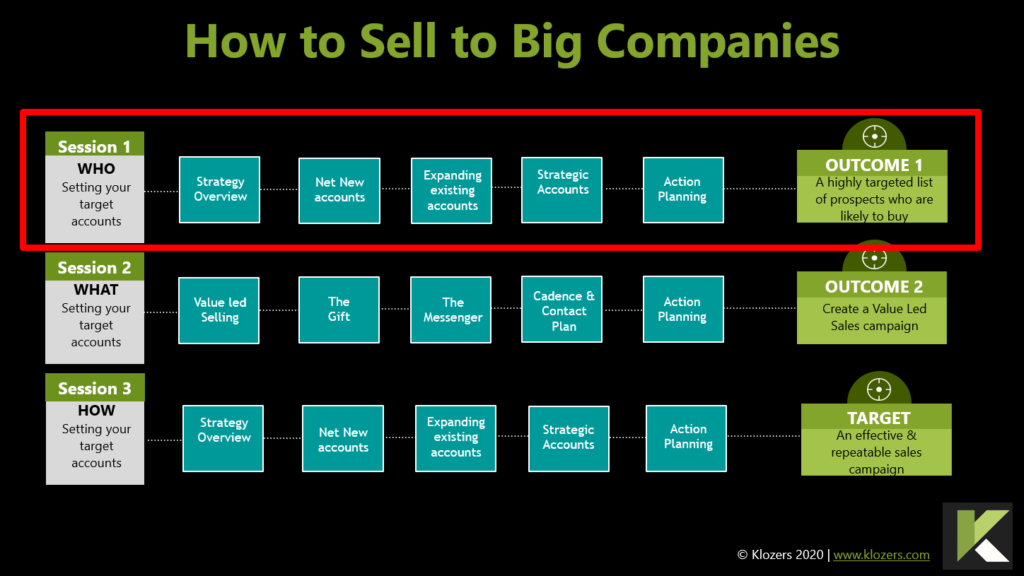
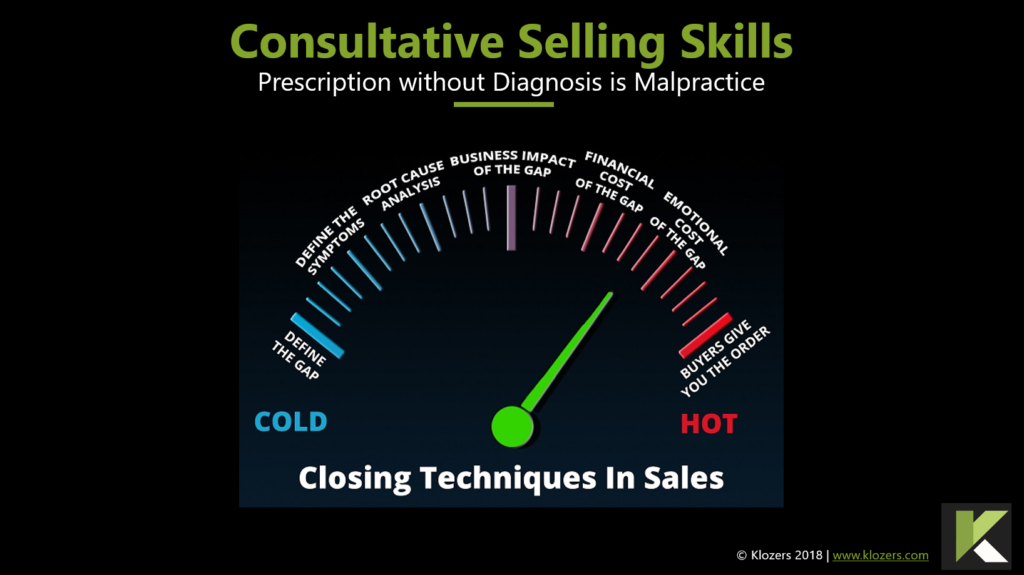
Get all the templates
you need to sell more now
Register here
Get the coaching you want, when you want it, at your desktop

“The first session was full of useful and practical sales information. I took so many notes and have come away with exercises I will carry out to help further clarify our approach to sales. I would highly recommend”
Rebecca Pick
Founder
Pick Protection
“Great training session with so much information packed into an hour. Looking forward to completing sessions 2 and 3. “
Max Anderson
Director
SuperBot Experts
Very insightful content from Klozers this afternoon. Thank you Iain Swanston for the invite to attend. This shall be hugely beneficial for our business moving forward and I am looking forward to putting my learning into practice
Laurie Wilson
Regional Sales Manager
CMP Products
Learn How to Sell to Big Companies
If you are new to sales at some stage you will want to learn how to sell to big companies. It’s common for most ambitious sales people and businesses, yet this can be a challenging or even, a near impossible experience.
For example, finding the right people to talk with (yes there will also be more than one decision maker) can be like finding the proverbial needle in a haystack, and then trying to coordinate all these decision makers can be like herding cats.
The longer sales cycles that inevitably arise from having multiple decision makers in a complex sale, then frustrate most sales people as time drags on.
The large revenues that Enterprise sales can deliver, more often than not, prove so elusive that the salespeople give up and focus on smaller opportunities, they know they can convert.
However, in some circumstances it can take the same amount of sales resources to convert a small opportunity as it does when selling the same product or service to a big company, so don’t give up just yet.
Learn More, Sell More, Earn More

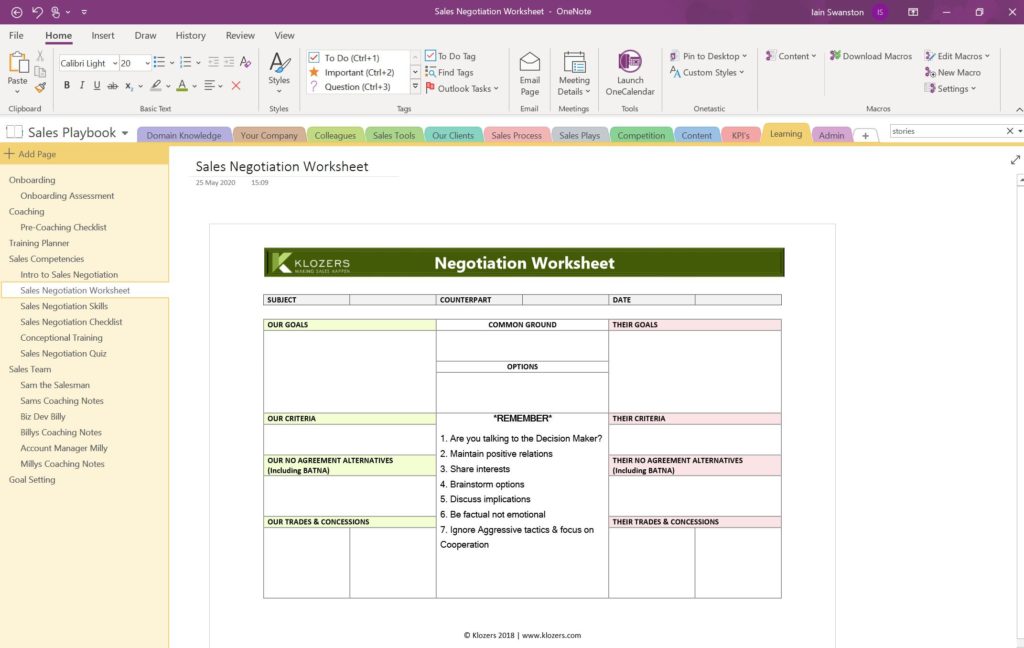
How to Sell an Idea to a Big Company
Maybe you don’t have a product or service but instead you have an idea that you want to sell. It’s the sames process and the fact is, it is possible to sell to big companies and large enterprise organisations, although it does need a slightly different approach.
The first FREE 60 minute session in this course walks you through the preparation and planning required before you approach big companies.
When you sell to big companies you may also need some additional sales resources that are not as commonly used when selling to smaller organisations, such as a Business Case, a Cost Benefit Analysis – don’t worry we’ve got templates you can use for all of these.
If this sounds like lots of work, then Yes it is, and because of this many companies will not rely on any one individual, instead they will work as a team to win large accounts. Part of that team should include Marketing in order that you can target the right people in the buying organisation, with the right messaging, at the right time.
Run the sales campaign as a mini project with scope, roles and responsibilities, costings, objectives and milestones. Needless to say that it usually makes sense to be targeting more than one big company if you are going to do this professionally, but don’t make the mistake of having too many, as the campaign can then turn into a marketing initiative which by their very nature are more generic.
The key to success is that all the messaging must be bespoke and relevant to every target which takes time, which is time that you won’t have if you have too many targets. Again this course covers everything you need.
Before you start selling to big companies there are however two important considerations you should address as follows:
1) Does your company have the capability to successfully deliver a project on the scale that a big company will require?
In most cases you will only get one chance to sell to a big company and delivering success for your first big company will also give you a reference point that will help you sell to other big companies.
2) Does your company have the financial resources required to sell to a big company?
If you buy materials in January to create stock for February and have agreed 90 day payment terms this means you have to run 150 days without being paid. Some small businesses are not sufficiently funded to do this, so be careful what you wish for.
Selling to big companies can transform your business, but like most things in life that are worthwhile it’s usually not easy and doesn’t happen overnight, but it certainly can be worth it.
Get started now and get
your first session FREE






